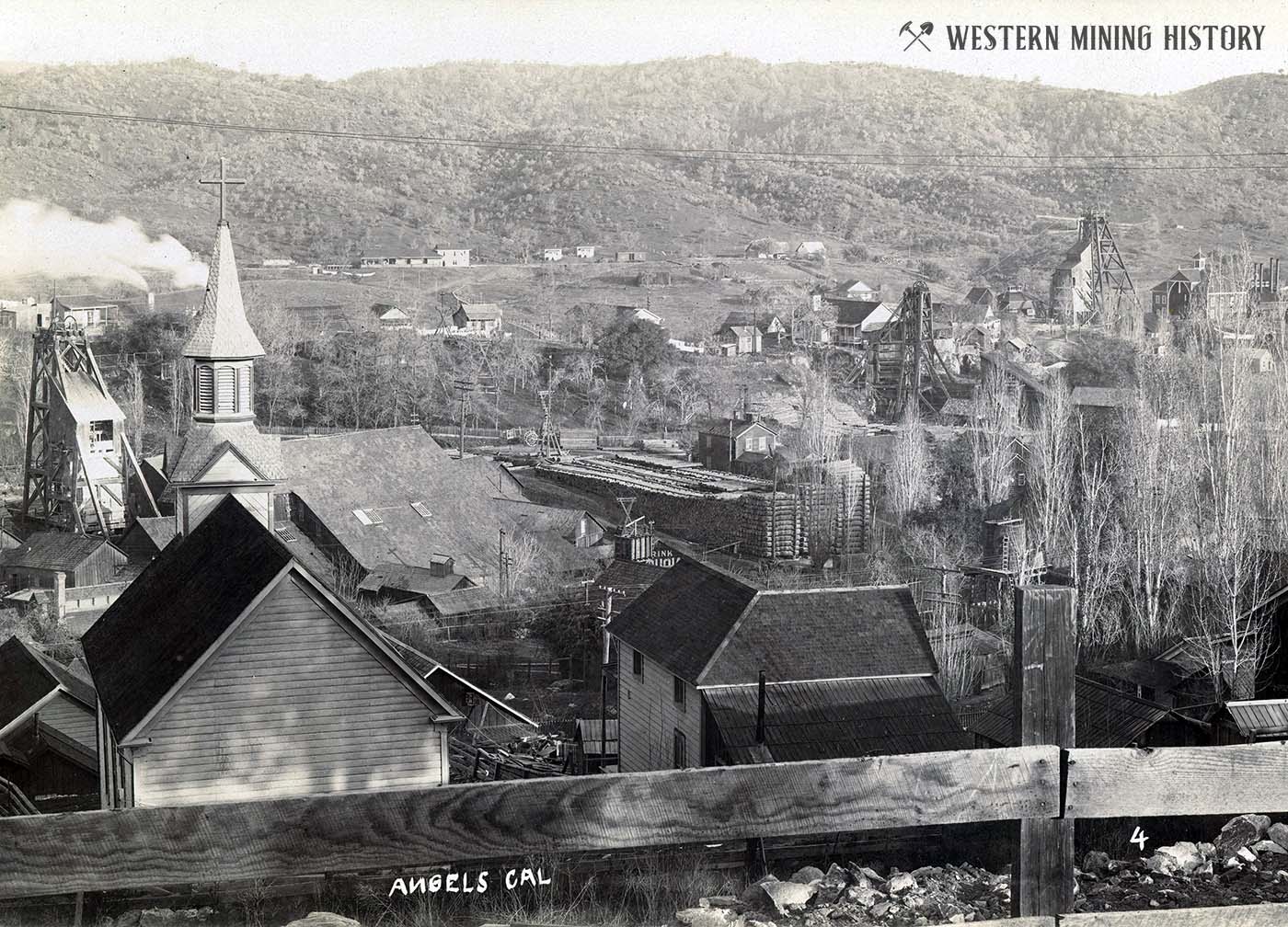Angels Camp History
By Jan MacKell Collins
“He ketched a frog one day, and took him home, and said he cal'lated to educate him; and so he never done nothing for three months but set in his back yard and learn that frog to jump.”
If you’ve ever been tickled by that line from Mark Twain’s “The Celebrated Jumping Frog on Calaveras County,” then you owe it to yourself to visit Angels Camp, one California’s earliest and most important mining camps. The historic community, located just a few miles south of San Andreas, has a long and varied history, even before Anglo miners discovered the rich deposits there during the mid-1800’s. Long before they came, Native tribes had found several creeks, ample forests, and plenty of other resources that very much made life worth living in the area.
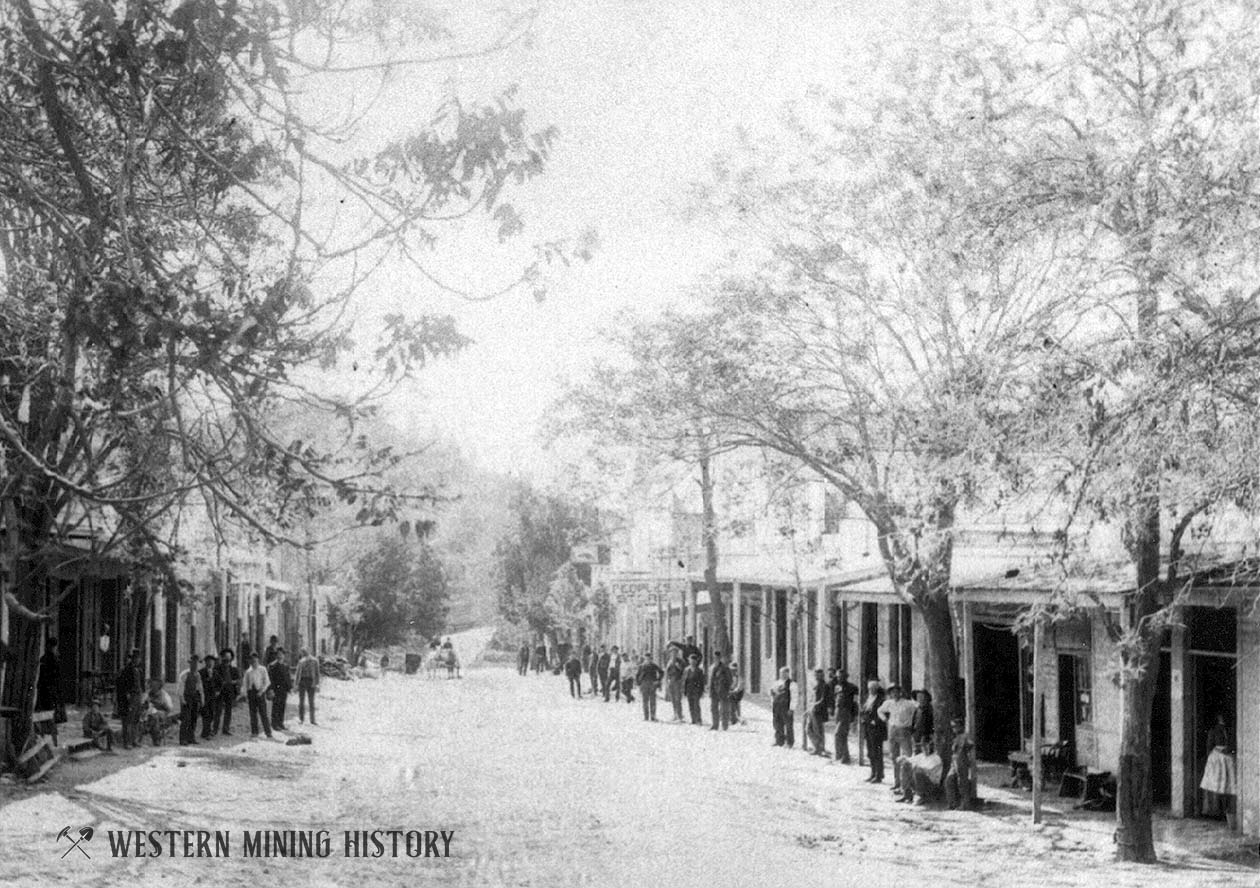
Early History
The story of Angels Camp begins in 1848 with brothers Henry and George Angel, lately of Rhode Island. As former soldiers during the Mexican American War, the men were part of a mining expedition led by James Carson and John Robinson. The Angels, along with 90 others, had set out in May from Monterey, prospecting around the region around what would become Angels Camp.
By December, Henry and George had set up their own trading post and named a nearby creek after themselves. Upwards of 100 other miners had settled in the area to mine placer gold. The Angels soon realized that trading with these men could prove quite lucrative, and it was easier than toiling for gold. By the time Henry Angel sold the trading post at a profit, some 300 miners were trying their luck on Angels Creek.
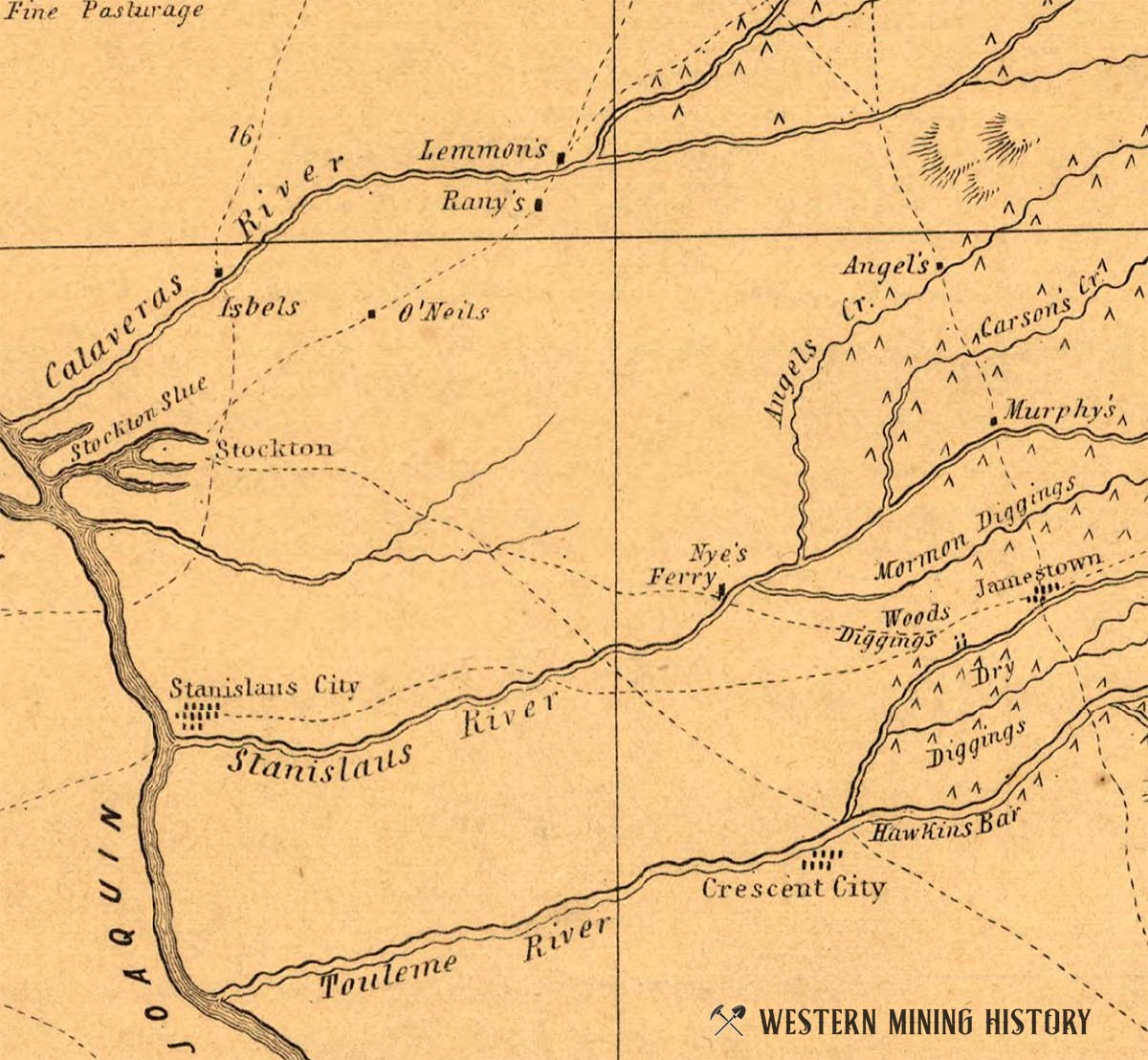
Angels Camp made a great headquarters for both miners and others. Numerous creeks, good hunting, three large and interesting caverns, and plenty of gold made the community an ideal place to live. When author John D. Borthwick moved to Angels Camp in 1851 for a few years, he remembered visiting a camp of Chinese miners who were very hospitable towards him.
Borthwick also attended a ball at C.G. Lake’s Hotel one evening. Music was provided by a fiddler and a flutist. Although no women were present, some of the men “had a patch on a certain part of his inexpressibles” that designated him as the “lady” so the men could dance. Gambling also was a staple at Angels Camp.
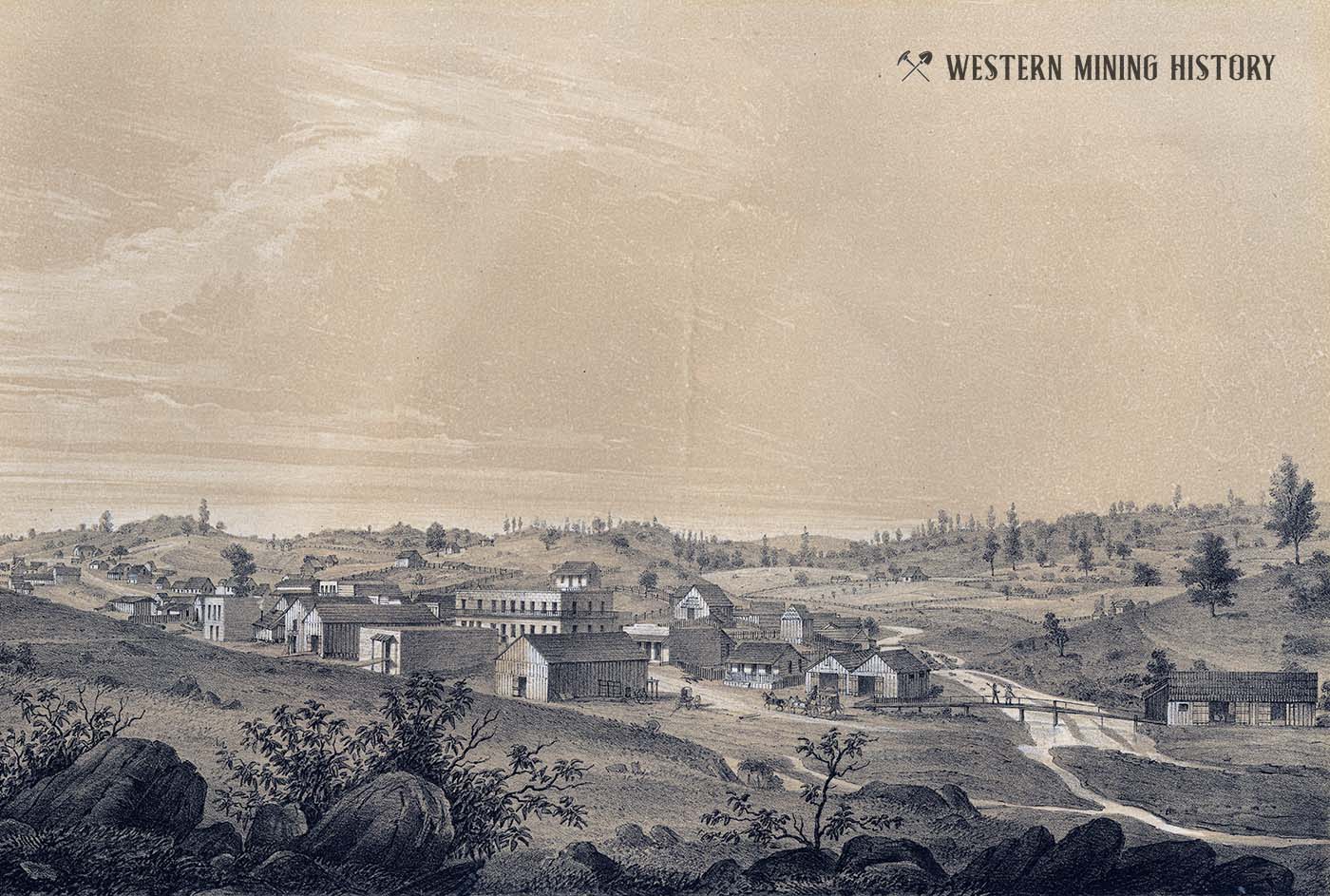
Around the time Borthwick came to Angels Camp, the community’s first post office opened under the name Carson's Creek. It would be two years before the name was officially changed to Angels Camp. But the camp remained rugged; when German writer Fredrich Gerstacker came through in 1854, he recalled that the community still consisted primarily of tents. Even so, more and more rich veins were being discovered all around Angels Camp, with horse-pulled arrastras and water powered mills to process the gold that was found. Dozens of claims had been filed.
Angels Camp had progressed to a few wooden buildings, and subsequently burned twice—once in 1855, and again the following year. The camp was rebuilt with bigger and better wood buildings, and at least five mills. By 1858, eight more mills were in operation. When noted traveler Bayard Taylor visited in 1859, he noted how successful the mills were, although much of the land around Angels Camp had been stripped of its lumber resources to build these and other structures.
For a little longer, the mining camp flourished and chugged right through the Civil War. One mine, the Winter Brothers claim, produced 20 to 50 thousand ounces of gold alone.
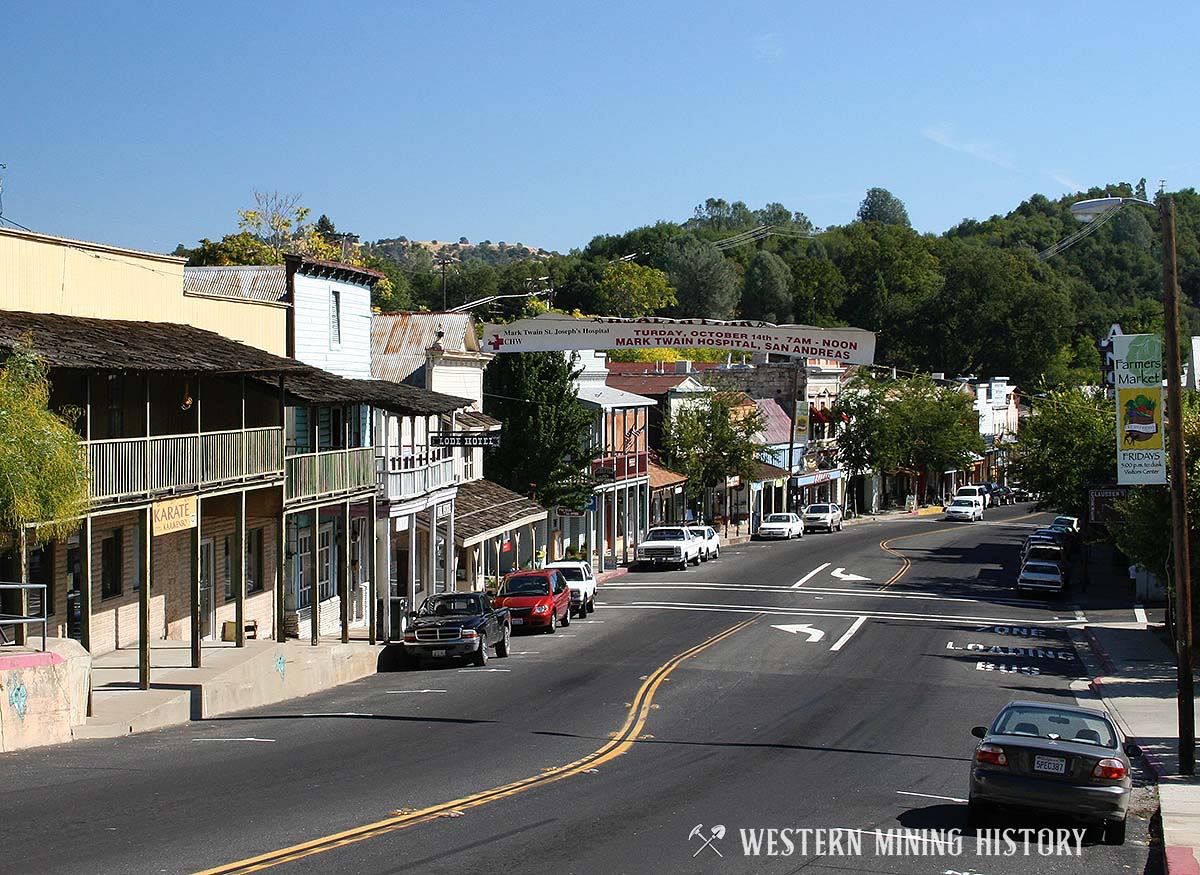
Unfortunately, the rich gravels at the local placer mines were slowly but surely running out, and the capital and technology to profitably extract gold from the hard-rock mines would not be available for many years. Angels Camp faltered.
This is how a young Mark Twain found the camp when he visited during the fall of 1865 and took up lodging in a cabin on “Jackass Hill.” Twain also found a bar to his liking at a local hotel, where he heard a funny story about a frog-jumping contest. Twain’s resulting short story, "The Celebrated Jumping Frog of Calaveras County," was published in a New York newspaper soon afterwards, and served as the beginning of his illustrious writing career. But Angels Camp continued to dwindle.
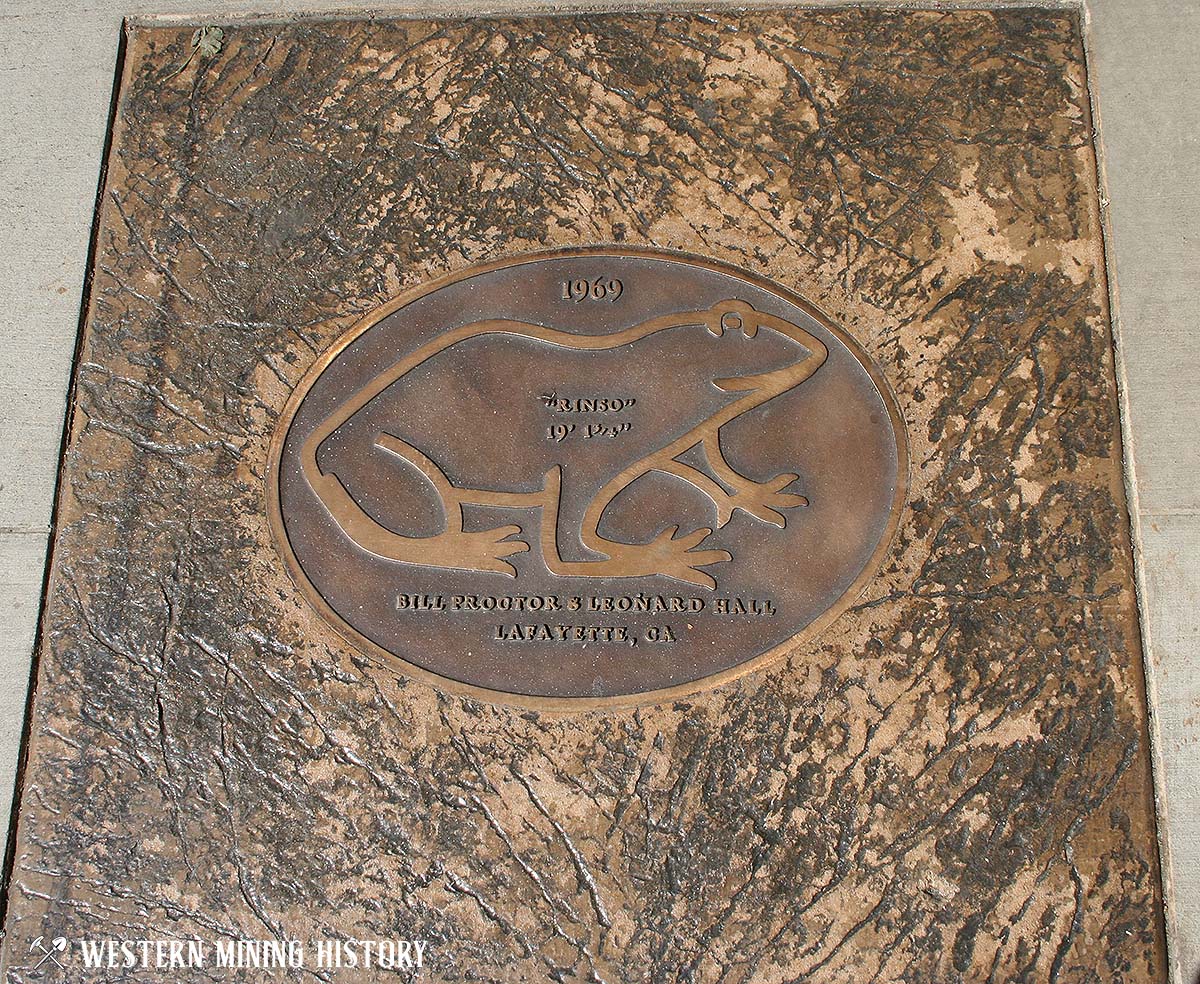
It was not until the 1880’s that Angels Camp’s mining industry picked up once more. New mining techniques had bumped up the game for several area mines, including the Angels, Angels Deep, Angels Quartz, Gold Cliff, Lightner, Madison, Mother Lode Central, Sultana and Utica, which managed to produce upwards of $30 million between them. By 1885, Angels Camp was known as one of the richest gold mining districts in all of California.
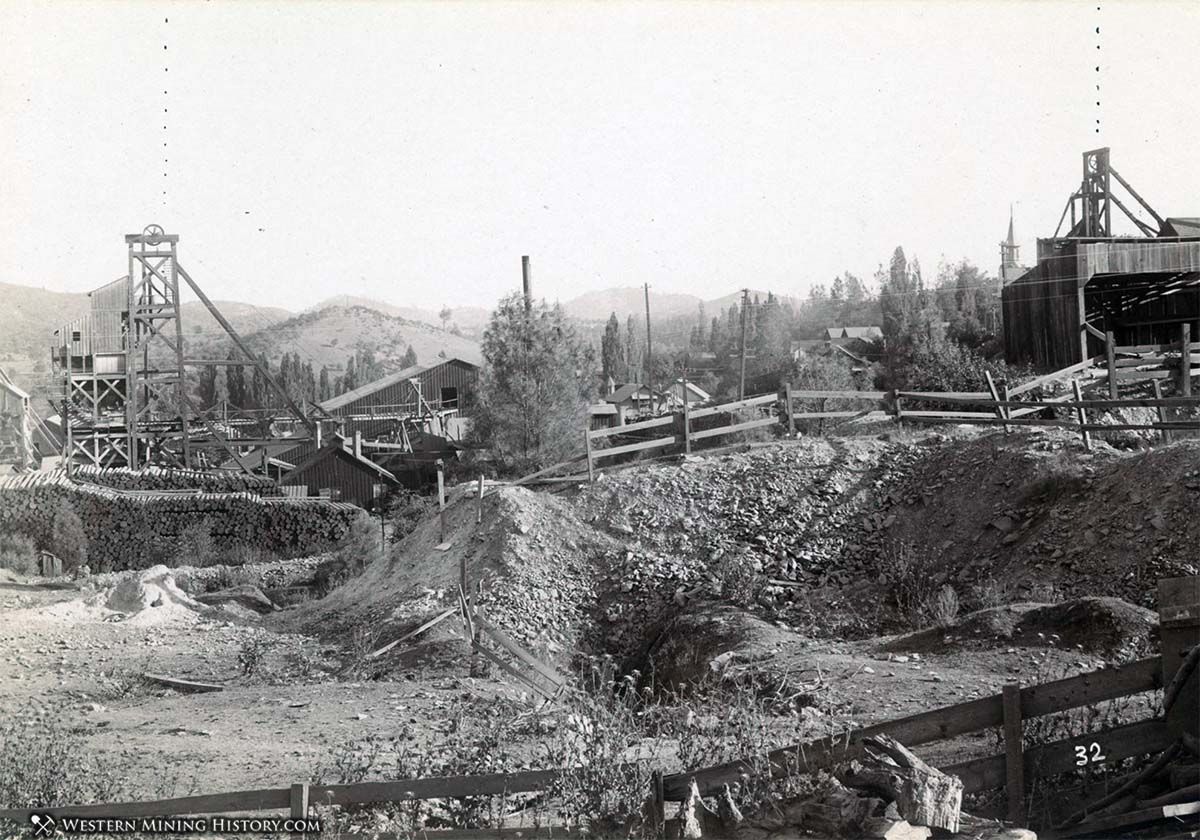
As of 1890 there were over 900 people living in the town proper, not counting the hundreds of prospectors scattered around the nearby hills and valleys. Unlike the early days when the population was predominantly white, the settlers now included those of Chinese, French, Irish, Italian and even Serbian descent.
Angels Camp continued to prosper. Cyanidation was introduced in 1896, allowing for gold ores to be treated more economically. The Sierra Railroad steamed through the town beginning in 1902. Ten years later, Angels Camp was officially incorporated, as Angels. And as of 1914, dozens and dozens of local mines and mining claims were doing quite well. Unfortunately, that all ended as World War I loomed on the horizon.
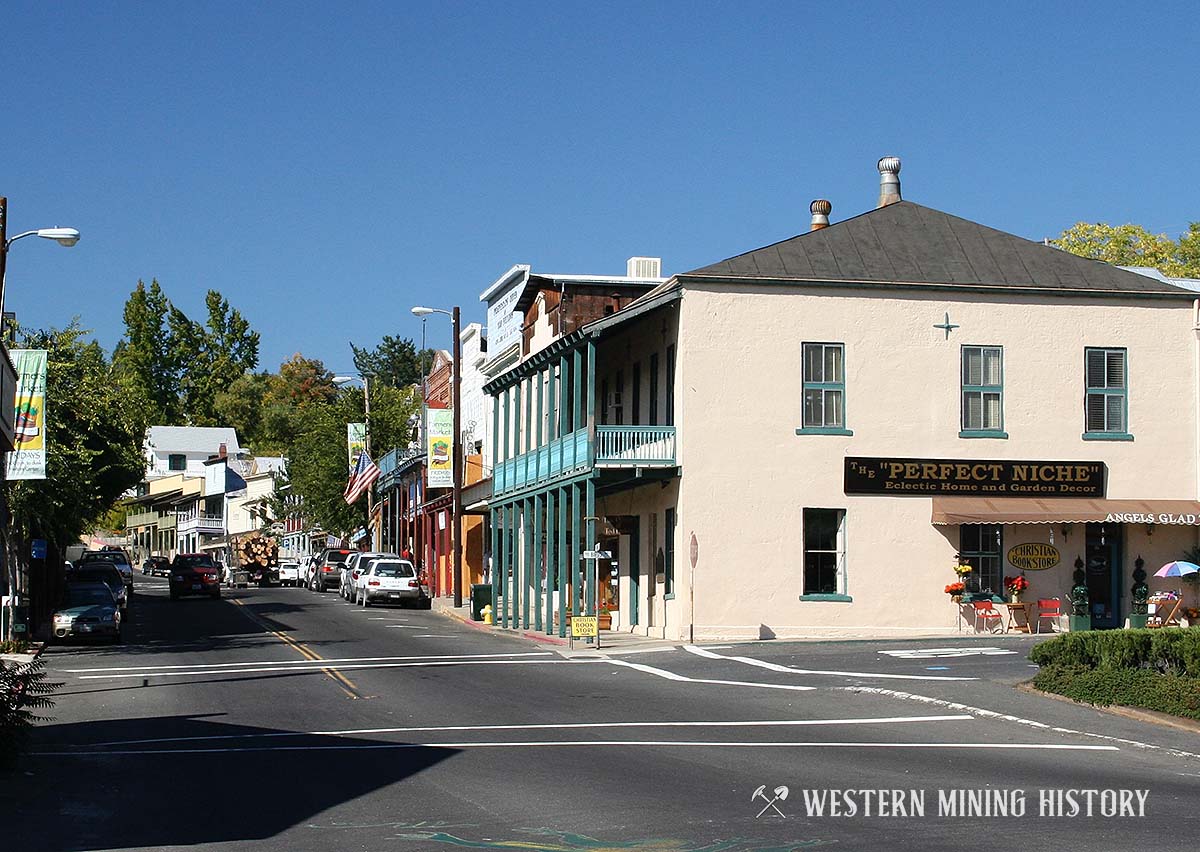
Over the next four years, as the cost of operations rose and the number of miners downsized, the mines around Angels Camp began closing, one by one. Only the smaller, family-owned and operated mines had a chance, but these too would eventually close.
The Revival of Angels Camp
Without gold, Angels Camp might have become a ghost town. But the town was now populated by folks who loved its history and began looking for ways to keep it alive. The Angels Booster Club was founded in 1925, and in 1928 the first-ever Calaveras Jumping Frog Jubilee was held.
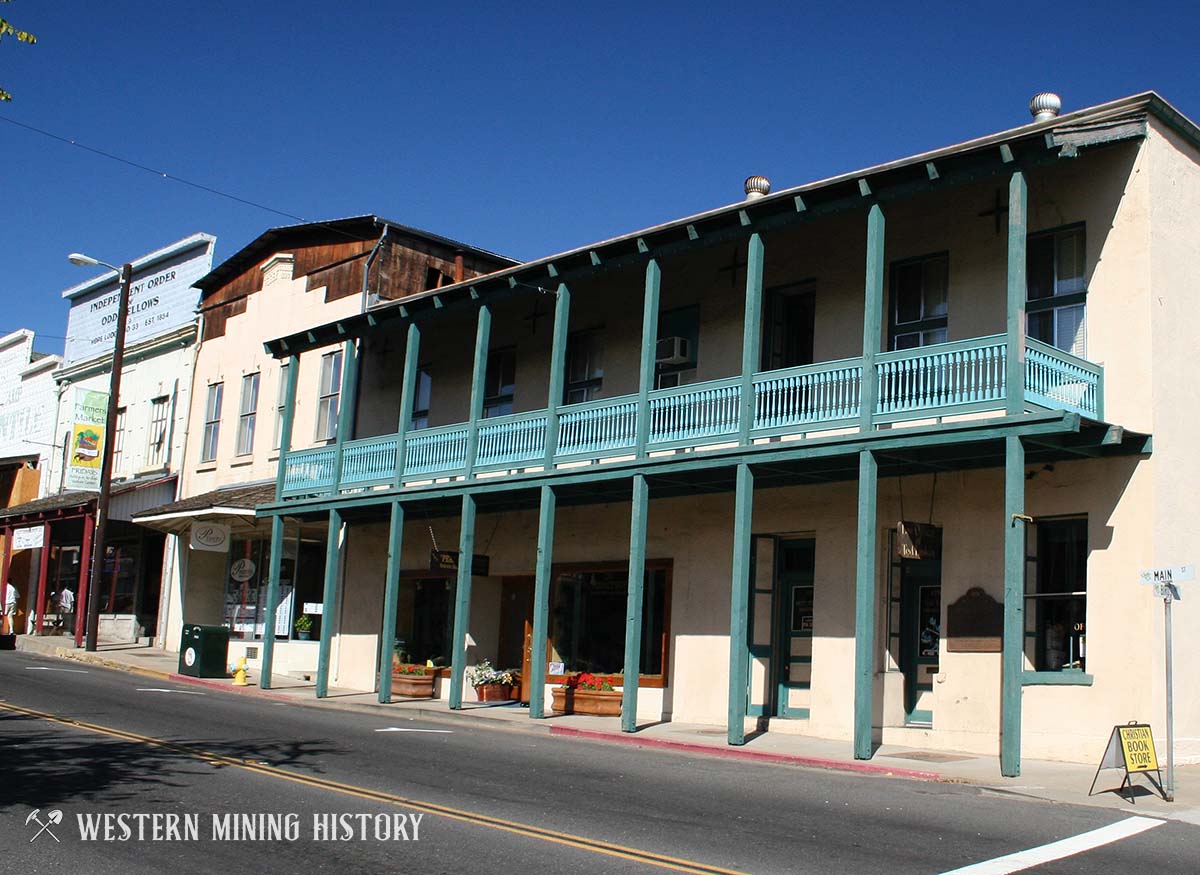
In 1931, the Calaveras Big Trees State Park was established with camping and hiking trails. This and other efforts were enough to sustain the community until the 1930’s, when hard rock mining was revived and well over $30 million in gold was mined. This second boom lasted until World War II, when the local mines were considered “non-essential” and closed for good.
Today, Angels Camp and Calaveras County’s income comes from tourism, but also lumber, power, transportation, water and wine industries that contribute to local economies. Historic brick buildings, remnants of days past, still line Main Street today, and the Calaveras County Historical Society maintains the Angels Camp Museum.
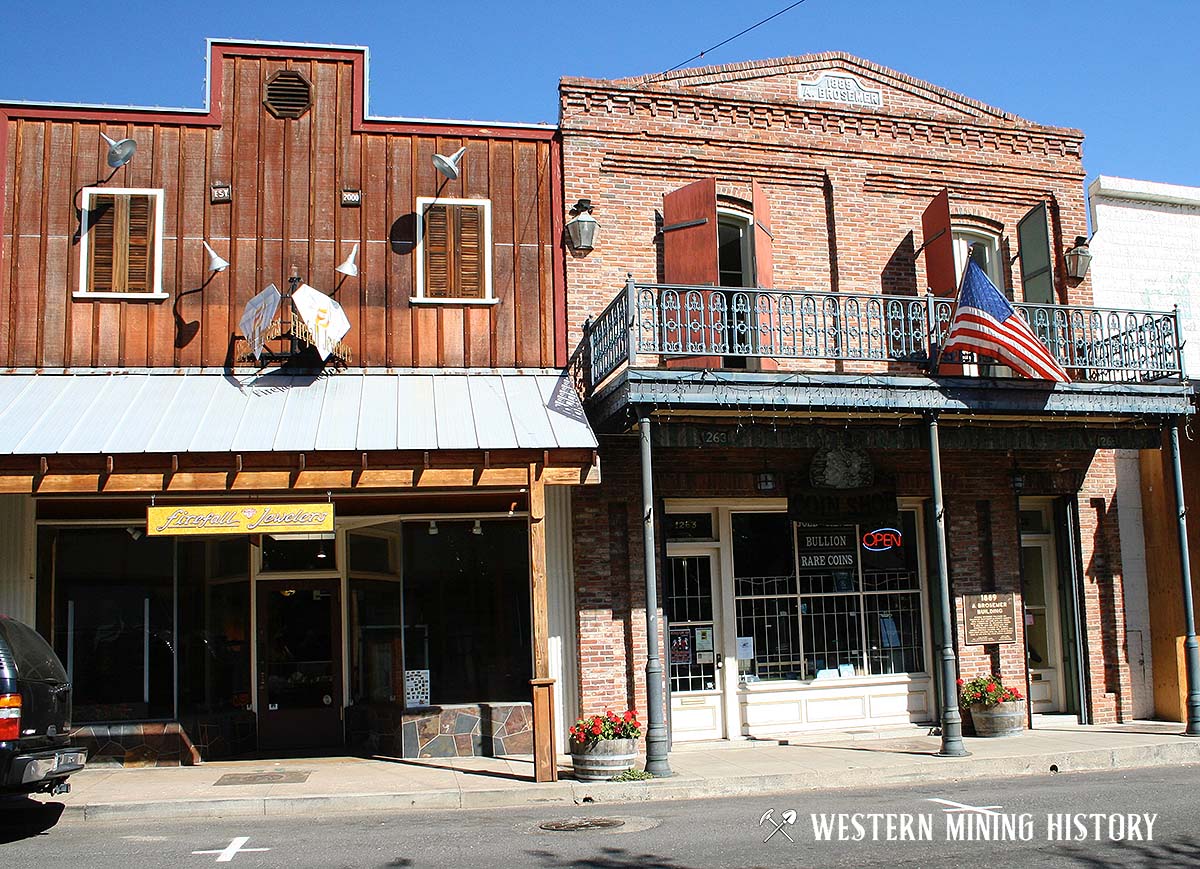
The annual frog jumps continue to honor Mark Twain’s historic tale, and Angels Camp remains the only incorporated town in the county. The city is also a National Historic Landmark, with some of its buildings are on the National Register of Historic Places.
It All Started With The Gold Rush
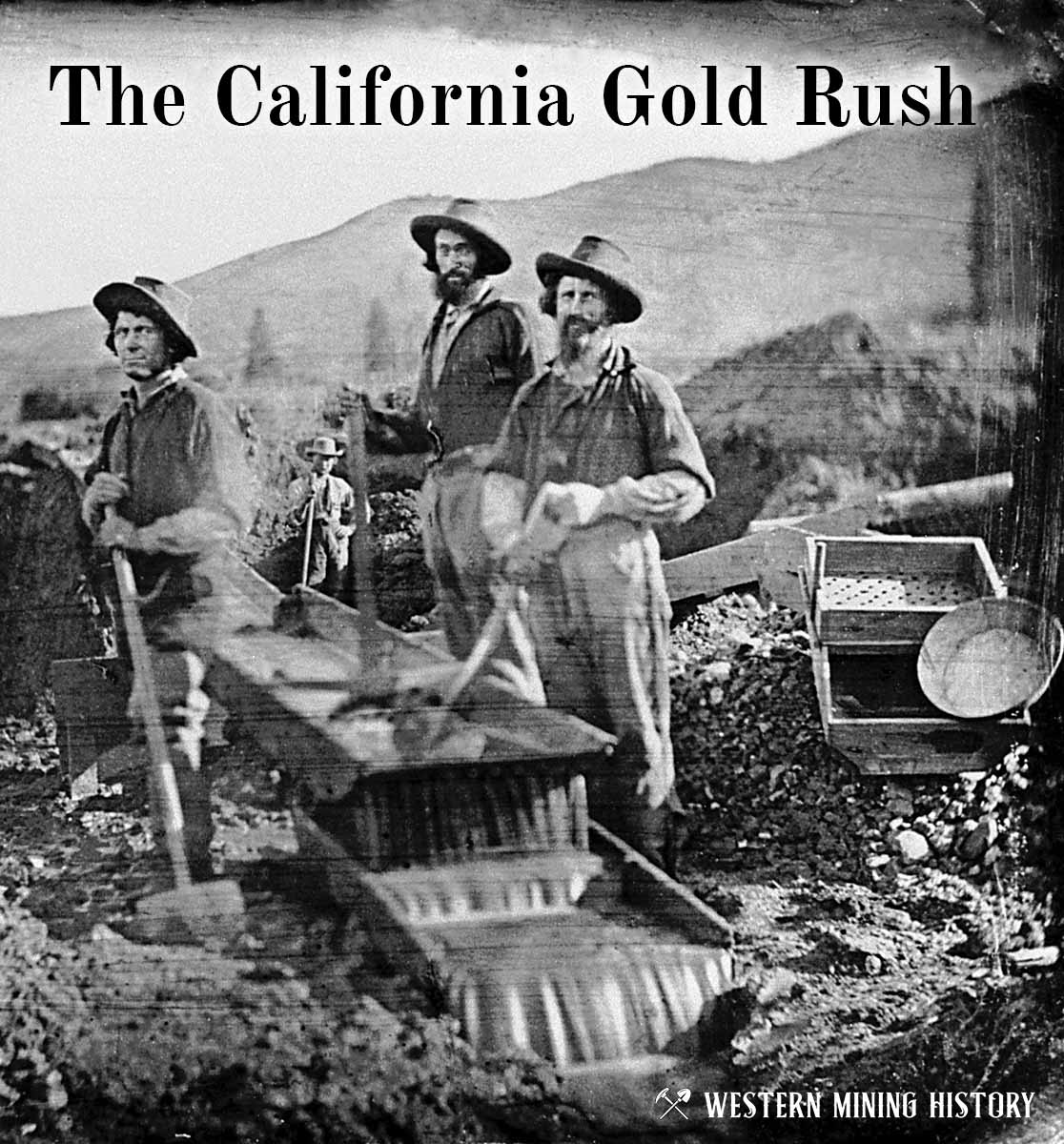
The great California Gold Rush kicked off the entire saga of western mining. Read about it at The California Gold Rush.
California Gold

"Where to Find Gold in California" looks at the density of modern placer mining claims along with historical gold mining locations and mining district descriptions to determine areas of high gold discovery potential in California. Read more: Where to Find Gold in California.
